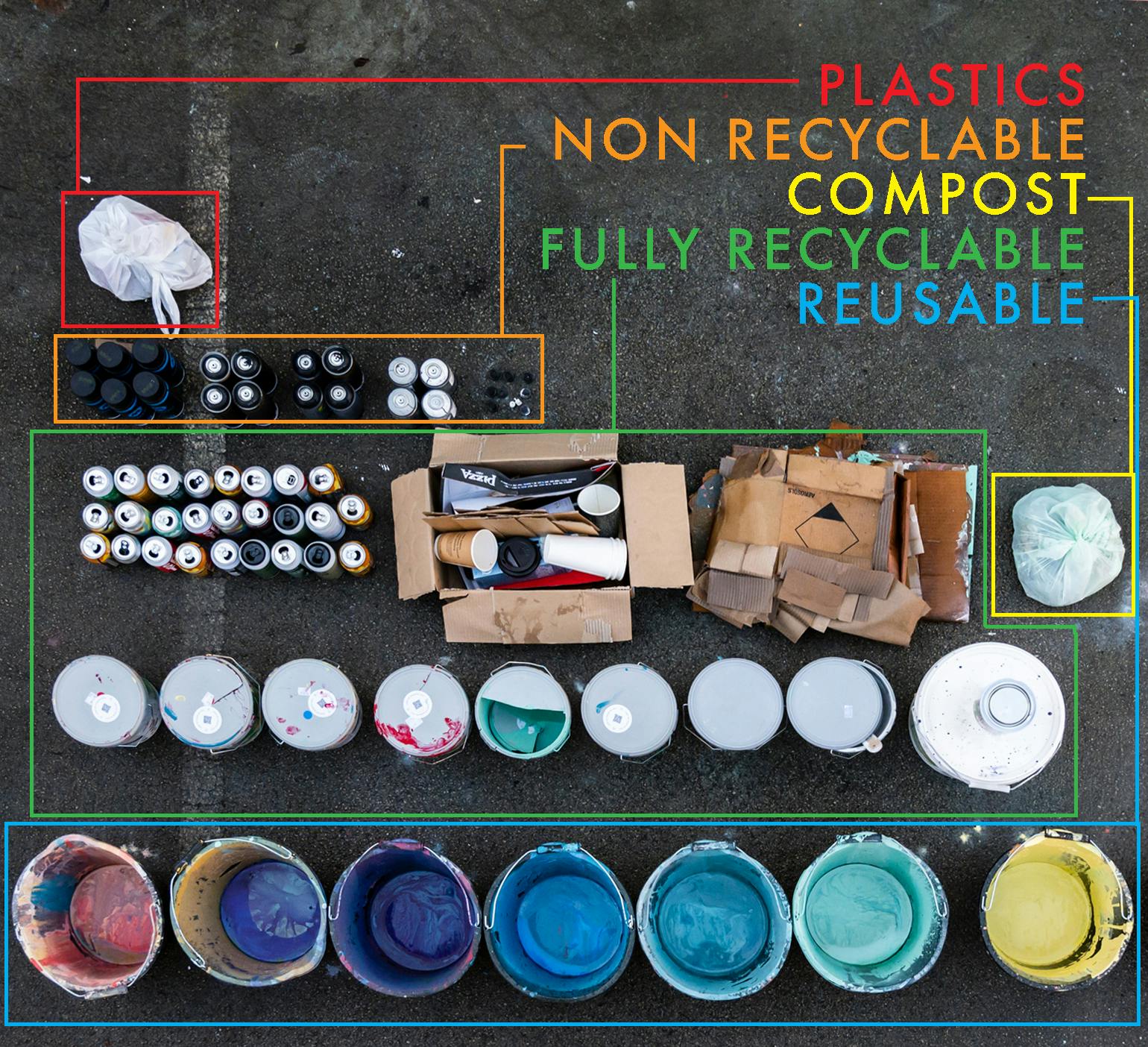As Curators
In General
As Artists
As Curators
as manufacturers
as recyclers
This page is intended to share more information on what curators and organizers of graffiti festivals can do to limit their environmental impact. Here you will find 5 general tips that we want to share with curators, graffiti- and street art festival organizers world wide.
- 01. Promote water-based paint
- 02. Invite local artists
- 03. Support traveling by public transport
- 04. Offer local & green food
- 05. Collect waste
There are some great examples where the first attempts are made by curators to put the environment first. We endorse this as it can influence the participants to also join the movement to become more sustainable as an entire scene.
Tina Ziegler, a well known curator in our scene, and former member of The Aerosol Alliance team, has made a tremendous effort to make a carbon footprint report on a mural done with INSA. We are happy to share their insights.
There are 5 tips that we want to share with curators and graffiti or street art festival organizers world wide. They are not easy steps to implement but it will give you insights in what is possible to limit the negative effects of making a mural with spray cans. We will soon update this page with more relevant insights regarding this topic.
01. Promote water-based paint
Switching from acrylic to water-based paint can easily drop the total environmental impact of spray paint by 25%. This is mainly due to the fact that no VOC emissions are released into the atmosphere because of the absence of solvents in water-based paint.
02. Invite local artists
Inviting local artists helps to reduce the impact of travelling towards the mural or mural festival. Dependent on the (festival) location, the size of the event and the artist you want to reach the impact of travelling can be substantial. The impact generated during a commissioned mural or graffiti festival is mainly coming from the art materials that are being used,. like the spray cans, bucket paint and so on. However, focusing your effort on attracting local artists helps to limit the impact of travelling and thus the overall impact of transport.
03. Support traveling by public transport
If you are attracting artists from abroad be sure to check the possibilities to let them travel by public transport. It is a bigger challenge to organize it but in Europe many train and bus connections are available between the bigger cities. Flying-in artist only makes sense for longer distances >2500 km. As a rule of thumb: try to avoid flying as much as possible.
04. Offer local & green food
It might be obvious but the food that is being offered also contributes to the overall impact of a graffiti festival. Limiting the options for meat consumption can reduce the environmental impact of food & beverage consumption. Buying locally produced food and greener alternatives (no not only salads) will be beneficial for the environmental footprint of your event.
05. Collect waste
Be sure to collect waste in different categories. Try to collect empty cans and buckets as much as you can. Are the spray cans almost empty and no more paint comes out? Make sure to puncture them! This enables you as a curator to have them recycled properly by the local waste treatment facility. Besides separating paint materials also check to collect glass and plastic bottles, cardboard boxes and general waste. Make sure that they end up at the right waste stream. Take a look how Tina Ziegler managed collecting waste 'Carbon conscious and waste aware' mural by INSA.
“Its not about perfection, but about intention. A step by step approach to positive change.” Curator, Tina Ziegler.
Please have a look on the Moniker Artfair website: Carbon Conscious Mural with INSA. Find our current tips and tricks for curators below!
